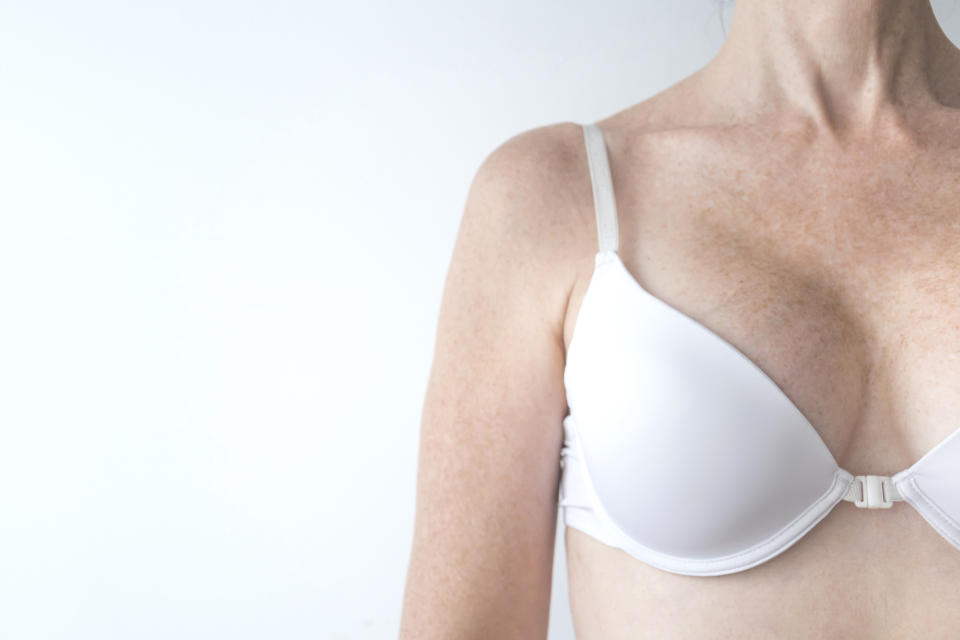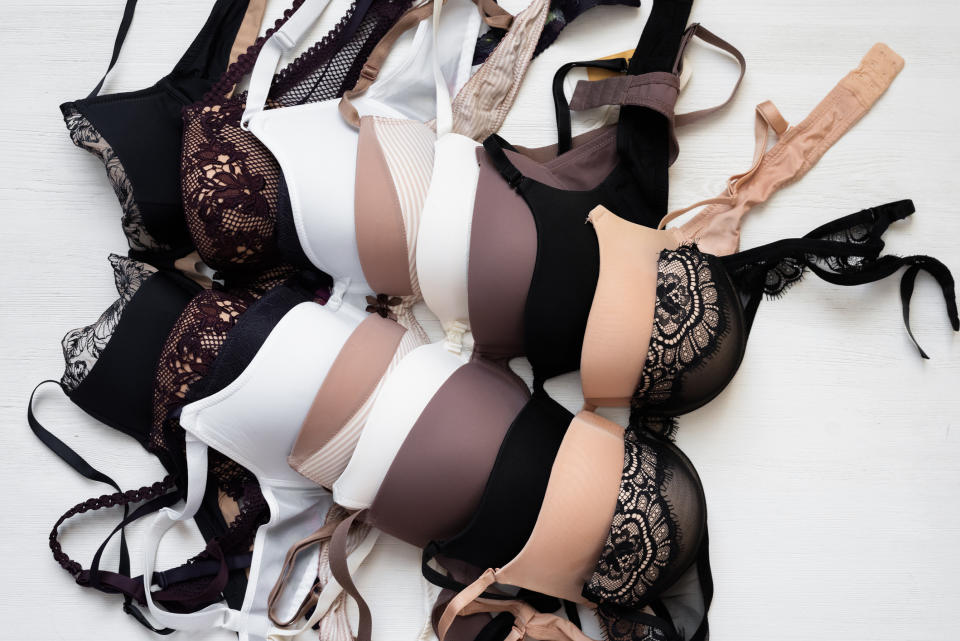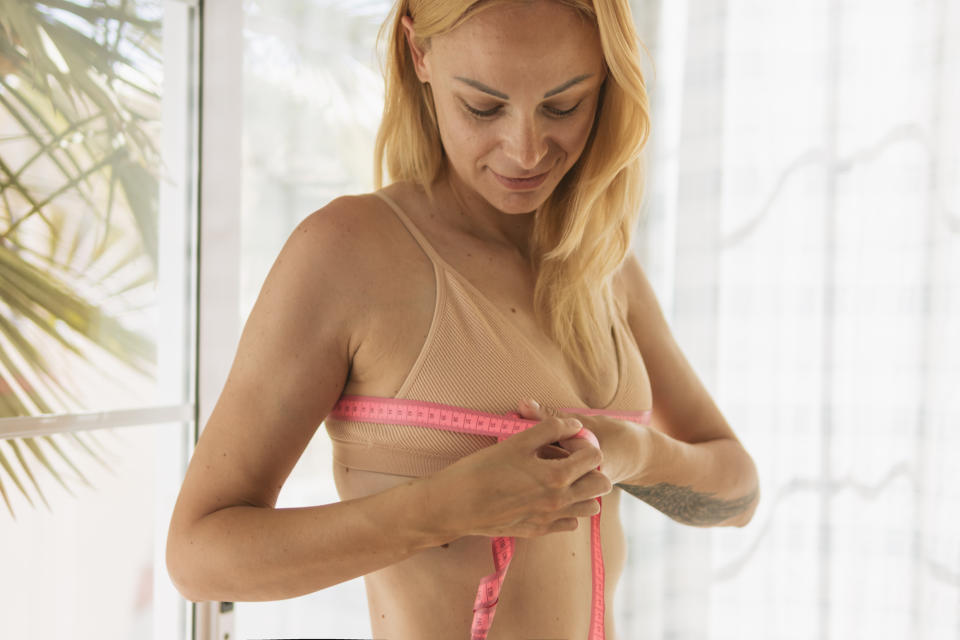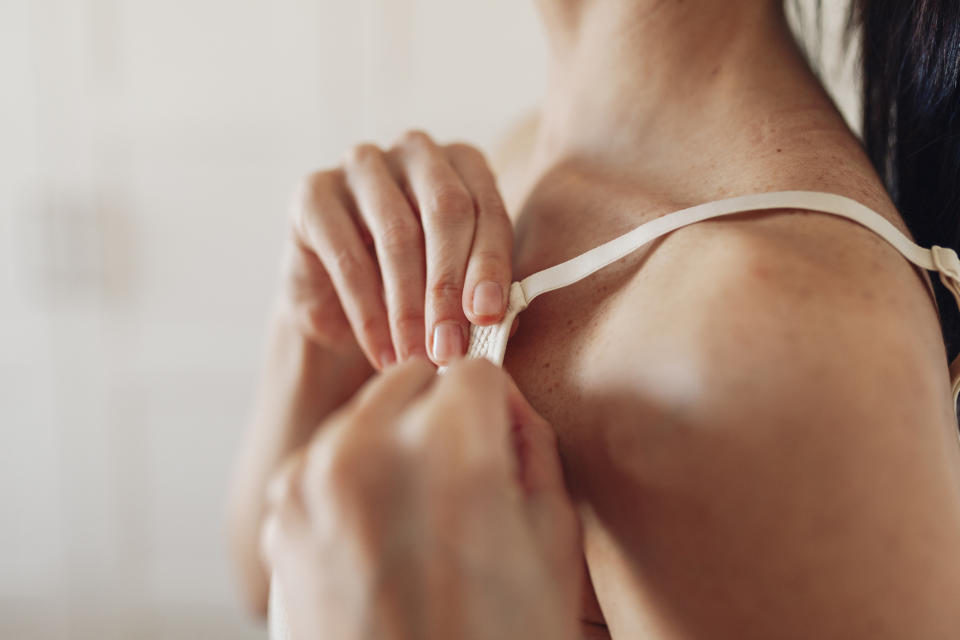The Bra Trick You Didn’t Know You Needed: Try Your Sister Size for a Great — Or Even Better — Fit
You finally decide to surrender Ol’ Reliable — the now-stretched, warped and threadbare bra that once was your favorite. It was the perfect bra when you got it (more than a few years ago), but it’s time to put it to rest and find a bra that supports you best. You go to the store where you found it before, excited to purchase a refresh, but there aren’t any available in your size. Before you give up, consider trying out your "sister size" — it may just fit you even better. Here, we tapped two bra experts who explain how to determine your bra sister sizes, as well as some key things to look for when choosing a bra.
How do bra sizes work?

Before you determine what bra sister sizes work for you, it’s good to know how sizing works overall. SheScience explains that the number associated with your band size (32, 34, 36, etc.) represents the width of your ribcage — not your shoulder width, as some believe. The letter of your bra size (A, B, C, etc.) represents your cup size, which is the volume of breast tissue. It is not, by itself, a unit of measurement but is instead dependent on your band size. For example, as SheScience notes, a 32B sized bra and a 38B sized bra do not have the same cup sizes; in fact, the 38B is four cup sizes larger. For each increase in band size, there is an increase in cup size, and vice versa.
What are bra sister sizes?
Because cup sizes are dependent on the bands, you have a lot more flexibility in bra sizing than you may think. Cami Raymond, Senior Design Director for shapewear brand Ruby Ribbon, describes sister sizes as, "alternative sizes that have the same cup volume but different band sizes. This means that if you find your usual size doesn't fit quite right, you might try a sister size for a better fit."

For example, if you typically wear a 34C but find the band too tight, you could try a 36B, which has the same cup volume but a larger band. It’s important to know your sister sizes for multiple reasons. Not only is it convenient for when a store is out of your regular size , but also, you might get a better fit with the slight differences in band and cup sizing that sister sizes provide. If you’ve ever been in the fitting room trying on your usual size and thinking, wow, this is almost perfect — if only the band was just a tiny bit looser… or if you’re bothered by ever-so-slight but noticeable gapping in your cup sizes, your sister size might be the solution to your problem.
"This may seem surprising, but not all cups are created equal. For instance, the cup capacity or volume on a 34D is not the same for a 36D, even though they both are labeled as a D cup. This is where bra sister sizes comes in," affirms Holly Ann Wilson, Vice President of Design at Soma.
Why can women often wear more than one size?
"Most women can fit into multiple sizes because breast sizes and shape can vary significantly, and different brands and styles of bras may fit differently even if they're labeled with the same size, explains Raymond. "Additionally, factors like weight fluctuations, hormonal changes and aging can all affect breast size and shape over time, further contributing to the need for flexibility in sizing." For example, if you've found your breasts have gotten smaller or larger with menopause, you can probably try a few different size options due to sister sizing.
Wilson agrees, "When thinking about bra sizes, your unique breast shape, breast tissue firmness and where you carry your weight at the band can all have an impact on how you use sister sizing to get the best fit for each bra style."
But the best thing about bra sister sizes is that even if your breasts and back have not changed, if you can't find the bra you love in your typical size, you can use your bra sister sizes to find one you love!
How do I find my bra sister sizes?
There are multiple ways. "The typical rule of thumb for finding your sister size involves adjusting the band and cup sizes while keeping the overall volume the same," advises Raymond. Here are her general guidelines when choosing the correct sister size.
To go up a band size
"Increase the band size by one size (e.g. from 34 to 36) and decrease the cup size by one size (e.g. from B to A). This maintains the same cup volume but provides a larger band for comfort if your current band feels too tight," says Raymond.
To go down a band size
"Decrease the band size by one size (e.g. from 34 to 32) and increase the cup size by one size (e.g. from B to C). Again, this maintains the same cup volume but provides a smaller band for a snugger fit if your current band feels too loose," explains Raymond.
See the chart below from bra website Amanté for help finding your sister sizes.

Important things to know about bra sister sizes
Once you play with the band and cup ratios, you’ll soon find that you have a large selection of sister sizes from which to choose. If you’re looking for the best fit possible, there are a few things to keep in mind.
Make sure you have an accurate measurement

"The wrong bra can make or break your day. When looking for a new bra, we recommend getting measured regularly by a trained fitter, like one of our Soma Bra Fit experts," says Wilson. "Our size, shape and preferences can change over time and even within the month so understanding what you like and what's comfortable for you is important."
Or, if you're in a pinch and need to measure your size yourself, just grab a trusty 'ol tape measure and wrap "around your ribcage, just under your bust (for your band size), and measure your bust size by wrapping the tape measure around the fullest part of your bust," explains Raymond.
Consider your current bra
When using your normal, everyday bra as a point of reference for sizing, keep in mind how long you’ve been wearing it. Regardless of size, your bra loosens, stretches and changes shape as time goes by, says Fleur of England. If you’re trying sizes on in a store, it might be a good idea to bring a fresh bra of your current size into the dressing room for a more accurate reference.
Your bra should feel comfortable
There is a common misconception that you just need to accept that any bra you wear will inevitably be uncomfortable. This doesn't — and shouldn't — need to be the case. If your bra is uncomfortable, chances are you are simply wearing the wrong size, or maybe the wrong style for your shape.
"Bras should be comfortable contrary to the experience of lots of women, and this starts with finding the right fit for you. Think about what you want the bra to do for you — lift, smooth, support — and then look at style," assures Wilson. "You shouldn't be compromising comfort and fit for fashion or function. Great bras that are the right shape and fit for you should be pretty and make you feel beautiful through their design and how they fit you and support your unique shape."
How to know when your bra fits just right

Because there are so many sizes that might fit, how do you know when one is the perfect fit? Consider these factors when determining if you have the correct size and style for you:
Snug band: "The band should be snug around your torso without riding up or digging into your skin," recommends Wilson.
Well-fitted cup: "The cup should be smooth against the skin without spillage or gaps at the top. If the bra has underwire, it should not cut or poke into the breast tissue," Wilson says.
Fabric comfort: "Comfortable fabrics that provide support without digging in are key," suggests Raymond. Even if a bra checks the other boxes, comfort matters.
For more bra tips and recommendations, click through these stories:
19 Best Bras for Older Women That You’ll Love Wearing Every Day
Flimsy Bra Straps? Here’s How To Tighten Them and Make Your Bras Last Longer
